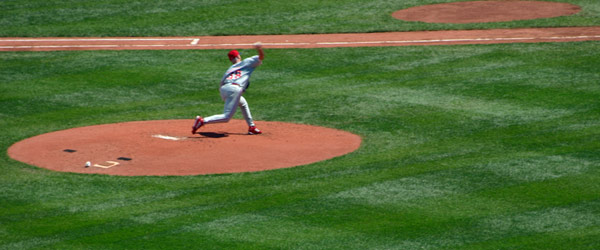How Does a Curveball Curve?

When most of us throw baseballs to our friends, the arc of the ball through the air is fairly predictable. Professional pitchers, however, can often make baseballs do amazing things including curve at the last second to fake out a batter.
How does a curveball curve? It's all in the arm and in the science.
The same principles that allow curveballs to curve also allow airplanes to fly. This is demonstrated by something called Bernoulli's principle: Airplane wings are designed to be curved on top, which creates an imbalance of air pressure on either side of the wing, resulting in lift.
When pitching a curveball, the pitcher puts a spin on the ball as it leaves his hand. As it travels through the air, the spin causes the ball to disturb the air around it.
Specifically, the spin causes air on one side of the ball to move faster than the other, resulting in uneven pressure on the ball, making it curve. A related scientific principle, the Magnus Effect, forces the spinning ball to move in the direction of lower pressure. And the baseball's raised seams help guide the ball by creating airflow resistance.
An excellent explanation is given in "The New York Times Book of Science Literacy." "The ordinary curveball, breaking to the left or the right, relies on a lateral force caused by its rapid spin. The sideways spin lowers the pressure on one side and raises it on the other. The effect of spin is potent. A ball spinning at 1,800 revolutions per minute a ball that will turn about 15 times in its 60-foot, 6-inch journey to the plate will feel a sideways force of more than an ounce, which will turn its path by about one and a half feet."
So a curveball curves because the pitcher has enough skill to exploit scientific principles for his own devious ends.
Sign up for the Live Science daily newsletter now
Get the world’s most fascinating discoveries delivered straight to your inbox.
- How Do Baseball Outfielders Know Where to Run to Make a Catch?
- Why Is There a Pitcher's Mound in Baseball?
- What's the Toughest Sport?
Got a question? Email it to Life's Little Mysteries and we'll try to answer it. Due to the volume of questions, we unfortunately can't reply individually, but we will publish answers to the most intriguing questions, so check back soon.










